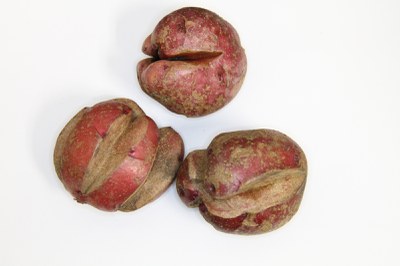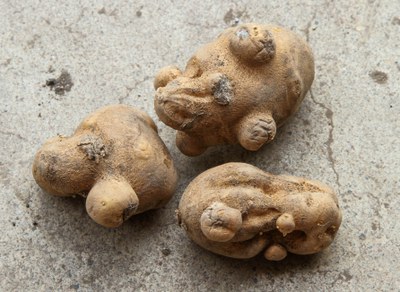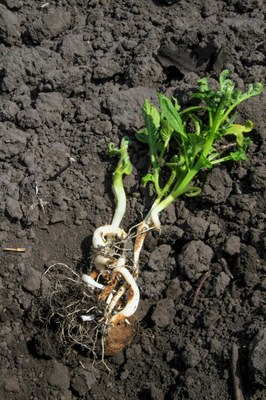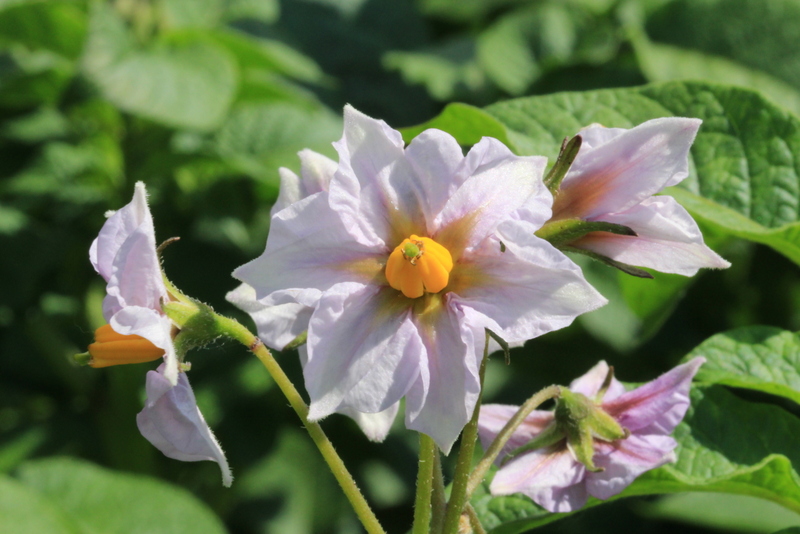Avoiding Herbicide Damage in Seed Potatoes
Recently in a meeting with the Specialized Section on Seed Potatoes of the United Nations Economic Commission for Europe I discussed herbicide damage in seed potato. They wanted to know, where does herbicide damage fit in the seed certification process? I am commonly asked, how do I prevent getting seed potatoes with herbicide damage? In this article I will address some measures to identify and avoid seed potatoes with herbicide residues.
The herbicide causing the greatest concern today is glyphosate, but other herbicides such as clopyralid and aminopyralid commonly cause problems in potatoes. Some chemistries, such as glyphosate will only affect potatoes for a limited time (2 generations), while others many affect each subsequent generation, such as clopyralid.
The major concern with herbicide injury is sprouting can be delayed or stopped which will result in reduced tuber set, smaller tubers, and reduced yield. Recent work by Dr. Harlene Hatterman-Valenti (in press) showed that with as little as 4% of the normal field use rate of glyphosate sprouting was inhibited in daughter tubers by 18 to 34% in a three week sprouting test (Figure 1; Table 1).
If you are concerned about herbicide damage in seed, there are a few things that you might consider checking before purchasing or planting a seed lot:
- Observe the field where the seed is being grown and determine the isolation of the field from potential sources of herbicide drift. If there are fields nearby that will likely be sprayed with a product that would be detrimental to seed potatoes, be sure the potato field is carefully monitored.
- Examine the tubers. In some cases herbicide injury can cause severe cracking, elephant hide, or other deformations in tubers (Figure 2 and 3). Tubers that are malformed can be sent to a laboratory for herbicide residue analysis. However, in some cases tubers appear normal, but may have herbicide residues. In this situation winter test data can help.
- Check the winter test data to determine if there were any germination problems, or if herbicide injury symptoms were observed in the foliage or sprouts (Figure 4). If there were herbicide-related problems in the winter test, have tubers tested for herbicide residues.
|
Treatment |
Glyphosate Applied |
‘Red LaSoda’ |
‘Russet Burbank’ |
|
|
Field use rate (21 fl oz/a) (%) |
——————— % ——————— |
|
|
Non-treated |
- |
0 f |
0 d |
|
Glyphosate |
2 |
14 e |
0 d |
|
Glyphosate |
4 |
34 d |
18 c |
|
Glyphosate |
8 |
80 c |
76 b |
|
Glyphosate |
17 |
88 b |
95 a |
|
Glyphosate |
33 |
95 a |
95 a |
Table 1. ‘Red LaSoda’ and ‘Russet Burbank’ daughter tuber sprout inhibition when treated with glyphosate during the late bulking growth stage the previous year and sprouted indoor the next spring, averaged over 2005 and 2006 (Hatterman-Valenti, in press).

Figure 1. Daughter tuber sprout inhibition when treated with glyphosate. From left to right, untreated, 33, 17, 8, 4, and 2% glyphosate treatment on Red LaSoda.

Figure 2. Cracking of Red Norland tubers caused by glyphosate.

Figure 3. Malformation of Russet Burbank tubers caused by glyphosate.

Figure 4. Foliar and sprout malformation of Russet Burbank caused by dicamba.





